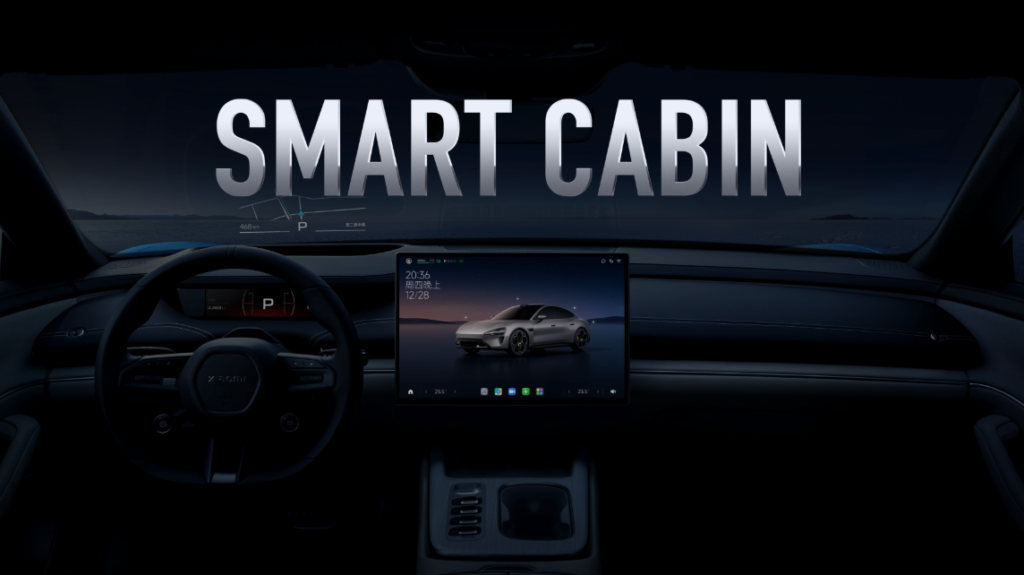Xiaomi, known for its innovative range of products from smart toothbrushes to cutting-edge electronics has now stepped into the electric vehicle market with the SU7. This debut EV blends smart technology with high performance, marking a significant milestone for the company.
The SU7 delivers exceptional power, accelerating from 0 to 100 km/h in just 2.78 seconds, placing it among the fastest electric vehicles. It also boasts an impressive range of 800 kilometers on a single charge, highlighting Xiaomi’s commitment to efficiency and sustainability. With the SU7, Xiaomi is redefining what a connected, high-performance electric vehicle can achieve.
Do read about some interesting highlights of the Xiaomi Cyberdog.

Source Credit – Xiaomi
What Sets the Xiaomi SU7 Apart?
Electric Powertrain: The SU7 uses a high-performance electric motor powered by an advanced battery system, delivering quick acceleration with efficient energy use.
Torque & Acceleration: The vehicle generates substantial torque, enabling rapid acceleration from 0 to 100 km/h in just 2.78 seconds.
Battery & Range: Equipped with a cutting-edge battery system, the SU7 offers a range of 800 kilometers on a single charge, optimizing both power output and energy conservation.
Regenerative Braking: The car features regenerative braking that recovers energy during braking and channels it back to the battery, extending its driving range.
Smart Connectivity: Integrated with Xiaomi’s IoT ecosystem, the SU7 connects to other smart devices, offering real-time monitoring, control, and data exchange.
Safety Systems: The SU7 includes advanced crash processing technology and real-time vehicle control systems to ensure passenger safety during emergencies.
User Interface: The intuitive 3D icon display and smart interior controls provide a seamless and engaging user experience.

Image Credit: Xiaomi
The innovation behind the Xiaomi SU7
We’ve analyzed key patents related to SU7. Read the summary below and discover the ingenious innovations behind this breakthrough technology!
Electric Vehicle Energy Optimization (CN118640311A) This patent describes a control member with an isolation layer that prevents water from triggering thermal runaway in the battery pack, enhancing safety by controlling valve operation. It reduces the risk of battery damage caused by condensed water flow.
This patent solves the issue of thermal runaway risk in battery packs caused by water flow. It prevents a control valve from opening due to condensed water, reducing the possibility of excessive water entering the battery and improving safety.
Temperature control method (CN118054129A) This patent describes a method and system for regulating the temperature of a vehicle’s battery pack to ensure it operates efficiently and safely. It involves selecting the appropriate temperature control system based on the current state of both the battery pack and the thermal management system. The system then adjusts the temperature of the battery pack accordingly to maintain optimal performance.
Image Credit: Xiaomi
This patent solves the problem of overheating or underheating in battery packs, which can reduce efficiency, cause damage, or pose safety risks. It ensures that the battery remains within a safe temperature range, improving the overall reliability and longevity of the vehicle’s battery system.
3D User Interface (CN118132187A) This patent describes a system for displaying and interacting with three-dimensional icons in a vehicle’s smart cabin. The icons visually represent vehicle components, and their state changes based on user interactions. When a user switches the visual angle or opens a component, the icons animate smoothly to show the changes in the component’s status, providing an intuitive and engaging experience.
Image Credit- Xiaomi
This patent solves the problem of making vehicle functions easier to understand and operate by improving the clarity and flexibility of the user interface, making it more interactive and user-friendly. It enhances the user experience by offering clear, dynamic feedback on vehicle component status.
Vehicle brake control method and device for better safety (CN118722554A) This patent describes a braking control system for a vehicle, specifically designed for drifting and non-drifting modes. When the vehicle is drifting, the system adjusts the braking force distribution between the front and rear axles based on the brake pedal’s position and the vehicle’s motion. This ensures that the vehicle maintains control while drifting, while also optimizing braking efficiency in non-drifting situations.
Image Credit: Xiaomi
The patent solves the problem of maintaining vehicle stability and safety during drifting, while also ensuring effective braking performance when the vehicle is not drifting, improving both handling and safety.
Vehicle collision emergency treatment system and vehicle (CN220562686U) This patent describes a vehicle collision emergency treatment system designed to enhance safety during a crash. It connects the vehicle’s power supply, a gasbag (airbag) controller, an emergency device, and a silicon-controlled rectifier (SCR). In the event of a collision, the gasbag controller sends a control signal to the SCR, quickly activating the emergency device. This rapid activation reduces the time it takes for the emergency system to trigger, allowing passengers to escape the vehicle more quickly after a crash.
The patent solves the problem of delayed emergency responses by ensuring that the emergency system is activated instantly during a collision, improving occupant safety and the chances of a quick escape.
The Xiaomi SU7 marks Xiaomi’s ambitious entry into the electric vehicle market, competing with industry leaders like Tesla, BYD, and NIO. What sets the SU7 apart is its seamless integration of Xiaomi’s tech ecosystem, offering advanced AI-driven features and a user-friendly interface that bridges the gap between technology and driving. Unlike its competitors, the SU7 focuses on affordability while maintaining premium functionality, making EV technology more accessible. With its potential to transform personal mobility through smart, efficient, and connected driving, the Xiaomi SU7 represents a bold step in shaping the future of sustainable transportation.
Need to know anything else? We got you covered!






